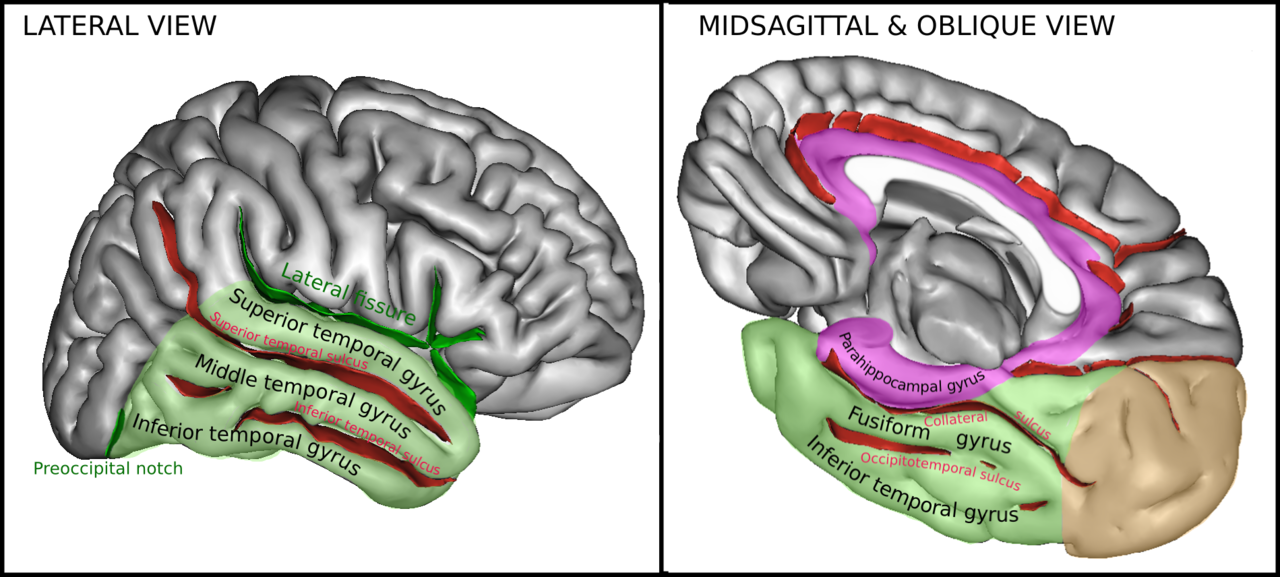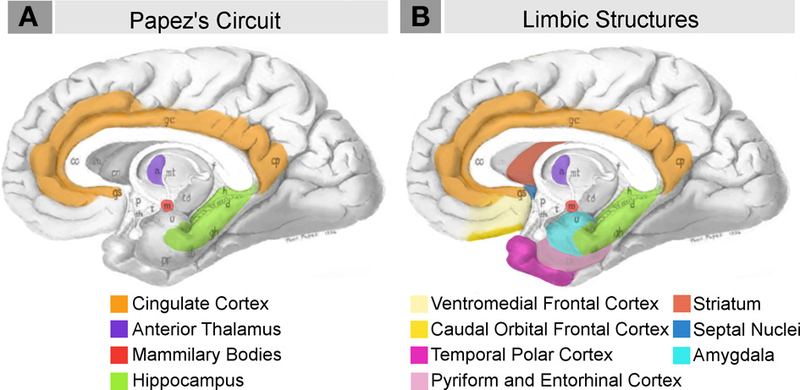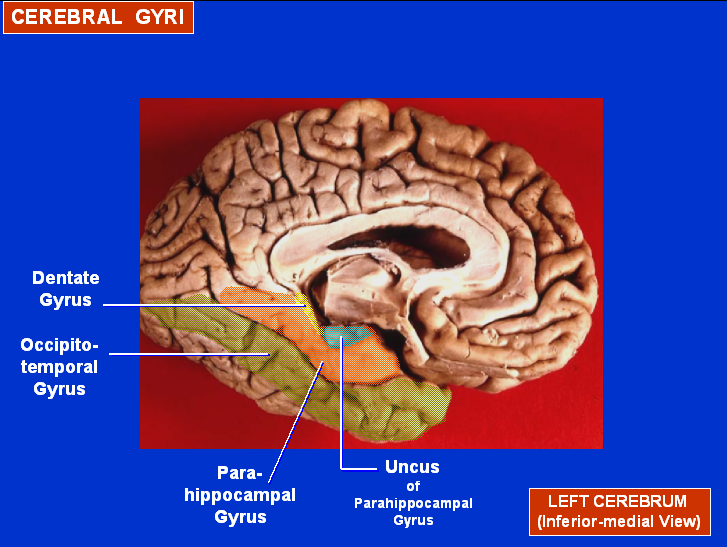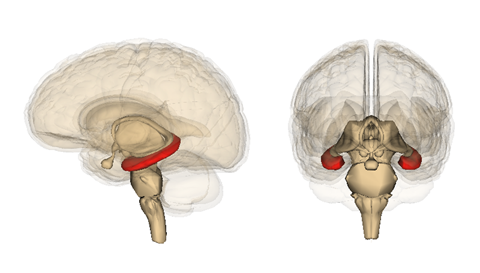9.3: Introduction to Memory and the Brain
- Page ID
- 173155
\( \newcommand{\vecs}[1]{\overset { \scriptstyle \rightharpoonup} {\mathbf{#1}} } \)
\( \newcommand{\vecd}[1]{\overset{-\!-\!\rightharpoonup}{\vphantom{a}\smash {#1}}} \)
\( \newcommand{\id}{\mathrm{id}}\) \( \newcommand{\Span}{\mathrm{span}}\)
( \newcommand{\kernel}{\mathrm{null}\,}\) \( \newcommand{\range}{\mathrm{range}\,}\)
\( \newcommand{\RealPart}{\mathrm{Re}}\) \( \newcommand{\ImaginaryPart}{\mathrm{Im}}\)
\( \newcommand{\Argument}{\mathrm{Arg}}\) \( \newcommand{\norm}[1]{\| #1 \|}\)
\( \newcommand{\inner}[2]{\langle #1, #2 \rangle}\)
\( \newcommand{\Span}{\mathrm{span}}\)
\( \newcommand{\id}{\mathrm{id}}\)
\( \newcommand{\Span}{\mathrm{span}}\)
\( \newcommand{\kernel}{\mathrm{null}\,}\)
\( \newcommand{\range}{\mathrm{range}\,}\)
\( \newcommand{\RealPart}{\mathrm{Re}}\)
\( \newcommand{\ImaginaryPart}{\mathrm{Im}}\)
\( \newcommand{\Argument}{\mathrm{Arg}}\)
\( \newcommand{\norm}[1]{\| #1 \|}\)
\( \newcommand{\inner}[2]{\langle #1, #2 \rangle}\)
\( \newcommand{\Span}{\mathrm{span}}\) \( \newcommand{\AA}{\unicode[.8,0]{x212B}}\)
\( \newcommand{\vectorA}[1]{\vec{#1}} % arrow\)
\( \newcommand{\vectorAt}[1]{\vec{\text{#1}}} % arrow\)
\( \newcommand{\vectorB}[1]{\overset { \scriptstyle \rightharpoonup} {\mathbf{#1}} } \)
\( \newcommand{\vectorC}[1]{\textbf{#1}} \)
\( \newcommand{\vectorD}[1]{\overrightarrow{#1}} \)
\( \newcommand{\vectorDt}[1]{\overrightarrow{\text{#1}}} \)
\( \newcommand{\vectE}[1]{\overset{-\!-\!\rightharpoonup}{\vphantom{a}\smash{\mathbf {#1}}}} \)
\( \newcommand{\vecs}[1]{\overset { \scriptstyle \rightharpoonup} {\mathbf{#1}} } \)
\( \newcommand{\vecd}[1]{\overset{-\!-\!\rightharpoonup}{\vphantom{a}\smash {#1}}} \)
- Explain the basic differences between learning and memory
- Describe the different types of memory and the brain structures involved in each
- Explain the three stage model of memory
- Compare and contrast implicit and explicit memory
- Describe types of declarative memory and their features
- Discuss the case of H.M. and what it tells us about the role of the medial temporal lobes in declarative memory
- Describe the concept of the "engram"
Overview
There are a number of different types and stages of memory, involving different brain areas and processes. In this section, we briefly outline the different types of memory and some of what is known about the localization of where they are processed in the brain. We discuss the intriguing case of H.M. whose profound loss of ability to form new long-term memory of facts and events led to much of what we know about declarative memory and the involvement of the medial temporal lobes in memory formation. Formation of memories about how to do things, procedural or motor memory involves different brain areas, in particular, the cerebellum and the basal ganglia.
Memory and the Brain
Learning can be defined as the acquisition of information during the lifetime of the individual organism. This information is typically stored in memory systems of the brain of the animal. By contrast, genetic information, which is acquired over the evolutionary history of the species, is stored in DNA. Remember that behavioral adaptations can be organized by information from both sources. The relative contribution of each source of information to the organization of any particular behavior varies with the type of behavior and the species. Typically, learning is more important to organization of behavior in animal species with larger, more complex nervous systems. However, evidence of memory is even found in honey bees and other invertebrates.
Types of Memory
Memory refers to the processes of storage and retrieval of learned information. Just as there are different types of learning, there are also different types of memory. The most common distinction is between short-term and long-term memory processes. Each of these major processes have distinctions in terms of various subtypes and the brain areas involved with them.
Another major distinction is between verbal memory and visuospatial memories. Verbal memories are in the form of words and ideas stated in words,whereas, visuospatial memories are in the form of visual images. Memories can be in the form of other sensory modalities as well. For example, when you try to recall talking to a friend on the phone, you may be able to "hear" your friend's voice in your mind (i.e. an auditory "image"). Verbal memories themselves can often involve auditory "images" in the form of the sounds of the words you are thinking about. Also, thinking about what a lemon tastes like can trigger a "taste" of it in your mind (i.e. a taste "image").
Yet another important way to differentiate between forms of memory is memory for facts and events versus procedural and conditioned responses. Memory for facts is explicit or declarative memory, which is of two types, episodic (memory of episodes in your life) and semantic memory (memory for facts and knowledge). A second type, implicit memory, is also of two types, procedural memory (memory for how to do things, such as skills like riding a bike, sometimes called motor memory), and memory for classically conditioned responses and priming effects.
It is difficult to keep all of these distinctions straight, especially since there is overlap between them, as we will see. Perhaps the best way to approach this is to start with examining a basic model of the stages of memory and then explore the brain mechanisms behind them.
The Three Stage Model of Memory and the Brain
One simple and influential model of memory proposes three stages (Baddeley, 1982): Sensory memory--Short-term or working memory (STM)--Long-term memory (LTM)
Sensory memory is of very short duration but very high capacity. To illustrate, just close your eyes at this moment and you will probably "see" a mental image of what it was you were just looking at. That is visual sensory memory and likely involves the visual cortex in occipital lobe. Notice it is nearly a replica of what you were just looking at; the mental image is very detailed and information dense, suggesting a high capacity form of storage. But the image quickly fades--that is, this stage of memory is of very brief duration, not more than a few seconds. Because sensory memories usually involve more than just visual input, multiple brain areas are used to processes this rapid form of memory.
Short-term memory (STM (STM) is a bit longer in duration, up to a few minutes, but could be as short as 20 seconds if the information is not rehearsed or worked with in some way. On the other hand, the capacity of STM is not nearly as large as sensory memory. It is usually said that STM has the capacity to store 7 plus or minus 2 separate items of information at a time (Miller, 1956). This is a limited storage capacity compared to the other stages of memory. Short term memory is also called working memory. This is because when you use information from your memory to do some task you are actively using or working with it. As will be discussed in later sections, STM relies heavily on the function of the prefrontal cortex of the frontal lobe.
Long term memory (LTM) has a very large capacity and very long duration. The capacity is so large it is difficult to quantify and the duration may last a lifetime. According to the three-stage model, information typically moves from STM (working memory) into LTM. However, sometimes this movement can be very fast without requiring much work, but other times it can take a great deal of time and effort.
The movement or "consolidation" of declarative and some other types of information from STM to LTM appears to involve the hippocampus (Squire, et al., 2015), located in the medial temporal lobes (see Figure \(\PageIndex{1}\):). For example, when you are studying for an exam, you are trying to get information encoded into long-term memory. Consolidation of the new semantic memory by your hippocampus, and the surrounding medial temporal lobe, is essential to this process. More on the roles of the hippocampus and temporal lobe is presented in later sections.
Information can also move from LTM back into STM or working memory. For example, if you were asked to name the capital of your home state (e.g. California), you could probably say it fairly quickly ("Sacramento!"). However, this information was not in your conscious awareness before you were asked the question. The information had to be pulled from your long term memory into your conscious awareness. This movement of information from LTM to your conscious awareness (into your "working memory") is memory retrieval.
How does your brain do it? How can it locate and pull into your conscious working memory a piece of information from among the countless pieces of information stored in your long term memory over your lifetime? Apparently, there are associative networks formed in long term memory that help facilitate an efficient search when you are trying to locate a particular piece of information for retrieval into conscious working memory. The formation and action of these networks are quite complicated and have been under active study for quite some time and will most likely continue to be. What is clear is that many distinct brain areas and circuits are involved in the types of memory that make up the three stages described above.

Figure \(\PageIndex{1}\): Right human cerebral hemisphere highlighting temporal lobe (green) showing locations of major cortical gyri and fissures of temporal lobe. The hippocampus (not shown) is buried within medial temporal cortex important in declarative memory. (Image from Wikimedia Commons; Medial temporal cortex; TempCapts.png; by Sebastian023; https://commons.wikimedia.org/wiki/F...:TempCapts.png; licensed under the Creative Commons Attribution-Share Alike 3.0 Unported license. Caption by Kenneth A. Koenigshofer, PhD.).
Brain Areas Involved with Sensory Memory
The brain areas and circuits involved with sensory memory are incredibly varied. Remember, just about all of your senses are sending information to your brain regarding the current state of both the external environment and internal sensations coming from within your own body. This compilation of information is constantly refreshing itself on a second-by-second basis. Due to the varied nature of this input, many areas of the cortex from all the lobes are involved in creating these sensory "snapshots" of your perceptual world.
Brain Areas Involved with Short-term/Working Memory
A large body of evidence indicates that the dorsolateral prefrontal cortex plays an important role in certain forms of memory work (Barbey, et al., 2013), in particular those that involve alternating between two memory tasks and exploring various possibilities before making a choice (Hunt et al., 2015). It seems fairly certain that dorsolateral prefrontal cortex holds information required for reasoning processes that are in progress.
Figure \(\PageIndex{2}\): Divisions of Human Prefrontal Cortex (Image from Wikimedia Commons; File:Prefrontal cortex.png; https://commons.wikimedia.org/wiki/F...tal_cortex.png; by Natalie M. Zahr, Ph.D., and Edith V. Sullivan, Ph.D.; image is a work of the National Institutes of Health and is in the public domain).
The prefrontal cortex is the main integrative area in the frontal lobe which plays a major role in short-term and working memory, along with it's extensive contributions to higher cognitive function, such as planning and decision-making. These roles are clearly interrelated in that most decisions require the juggling of both current, short-term information and information from past experiences. Similarly, most plans for both the immediate and long-term future benefit from at least some input from current circumstances. The prefrontal cortex is well-situated to play this role since it receives input from brain areas involved with a variety of functions from sensory processing to emotion and motivational regulation.
A number of classic studies have shown that the short-term/working memory can handle the simultaneous processing of 7 +/- 2 "chunks" of information for a relatively short-period of time (~20 seconds) without rehearsal. If the information is worked with on a regular basis, it can be held for a longer time until it is either lost or committed to long-term memory.
Brain Areas Involved with Explicit Long-term Memory
The hippocampus has been implicated in the "consolidation" or fixing of new declarative and episodic long-term memories into permanent storage (see Bird & Burgess, 2008). It has also been shown to be involved with the encoding of the temporal sequencing of events (Ranganath & Hsieh, 2016), spatial memory (Bird & Burgess, 2008; Voss, et al., 2017), and retrieval of memories by reactivating cortical representations of them (Tanaka, et al., 2014). See Figure \(\PageIndex{1}\): and the section below for more details on these functions and the associated hippocampal and temporal lobe anatomy.
Brain Areas Involved with Implicit Long-term Memory
The basal ganglia is a collection of subcortical nuclei that have a variety of functions from an extensive influence on motor control to a powerful mechanism involved with many types of motivation. Some of the areas here are also collectively referred to as the striatum and include the caudate and putamen. Due to it's role in motor function, it is suited to play a significant role in the development and implementation of memories related to habits. Habitual behaviors help us preserve cognitive bandwidth, reducing the “mental energy” that is used during repetitive task performance. The downside of habits is that reliance on habitual responding can limit behavioral flexibility, and cause a person to act in a suboptimal manner, perhaps behaving in a way that led to a positive outcome in a previous set of circumstances without incorporating and evaluating the present circumstances (Lim, A. OER Neuroscience Initiative, https://oercommons.org/courses/open-...nce-initiative).
The cerebellum, located in the hindbrain, is also involved in formation and storage of implicit memories. In this case it plays a role in the control of motor programs for learned skilled movements (procedural or motor memory) and is also the source of learning and memory of simple conditioned reflexes, such classical conditioning of the eye blink reflex (Kim & Thompson, 1997; Christian & Thompson, 2003). Due to these roles, it has been extensively studied in the learning areas of classical conditioning and it's contribution to implicit forms of memory.
The Medial Temporal Lobes and Declarative Memory
Research has led to a consensus that the medial temporal lobes have an essential function in declarative memory. As Squire et al. (2004, p. 279) summarize: "The medial temporal lobe includes a system of anatomically related structures that are essential for declarative memory (conscious memory for facts and events). The system consists of the hippocampal region (CA fields, dentate gyrus, and subicular complex) and the adjacent perirhinal, entorhinal, and parahippocampal cortices." See Figure \(\PageIndex{3}\):.

Patient H.M, the Temporal Lobe, and Declarative Memory
A fascinating research enterprise contributing greatly to our understanding of memory is the case of H.M. (e.g. Henry Molianson). In an attempt to control his major epileptic seizures, H.M. had bilateral removal of much of his medial temporal lobes including both of his hippocampi. Up until his death in December of 2008 of natural causes at age 82, H.M. still believed that Eisenhower was President of the United States. He knew almost nothing about anything that had happened after his brain surgery. According to a researcher working with H.M., whenever he was asked to describe his physical appearance, even years after his surgery, H.M. continued to describe himself as a young man with a thick head of wavy black hair, even though, at his age, he had almost no hair at all. After the surgical removal of much of his medial temporal lobes, H.M. could remember most things that happened before his surgery, but he could not remember any new facts or events for more than a few minutes. His old long-term episodic and semantic memory was fine. His short-term memory was also normal. What he could not do was to consolidate or fix any new information about facts or events into his long-term memory. Yet, his implicit memory and his ability to consolidate new procedural memories into permanent storage was normal. He learned to play computer games with great skill, but never was able to remember having learned them, and he was often puzzled about why he was so good when he couldn’t even remember having seen computers or computer games before.
It is interesting to speculate about what it must have been like for H.M. when he got up in the morning and looked in the mirror, expecting to see himself as a young man and finding an old man instead. Or what he thought when he awoke in the morning and looked over at his wife lying next to him. He can only remember her as she looked as a much younger woman. What must he have experienced when he saw the older woman asleep next to him? Did he know who she was? He must have been puzzled about what could have happened to her overnight. Soon, however, he would forget what he had just seen minutes before. The life of H.M. must have been truly extraordinary. Studies of H.M. for many decades and others like him revealed much that we know about memory and the brain today, in particular the role of the medial temporal lobe structures in declarative (conscious) memory formation.


Figure \(\PageIndex{4}\): (Left) Medial view, left human cerebral hemisphere highlighting Dentate (yellow) and Parahippocampal gyri (orange) within medial temporal lobe important in declarative memory. (Right) Hippocampus (red). (Images from Wikimedia Commons; (Left) Dentate gyrus; File:Cerebral Gyri - Medial Surface2.png; https://commons.wikimedia.org/wiki/F...l_Surface2.png; by John A Beal, PhD. Dep't. of Cellular Biology & Anatomy, Louisiana State University Health Sciences Center Shreveport; licensed under the Creative Commons Attribution 2.5 Generic license. (Right) Hippocampus; File:Hippocampus image.png; https://commons.wikimedia.org/wiki/F...mpus_image.png; by Life Science Databases(LSDB); licensed under the Creative Commons Attribution-Share Alike 2.1 Japan license. Caption by Kenneth A. Koenigshofer, PhD.).
The Engram
In the mid 20th centure, Karl Lashley, a pioneering physiological psychologist, now well known in the history of psychology, investigated the physical basis of memory in the brain. One of the famous (or infamous) techniques he used was to teach rats to navigate a maze and then destroy various parts and amounts of their brain tissue to see which areas were critical to memory. He was searching for the physical representation of memory in the brain. He referred to the physical changes in the brain, which occur when we learn and remember something, the "engram," or "memory trace."
Ulitmately, his results were inconclusive, but he did find that the more cortex he destroyed the greater the disruption of memory. He called this the "principle of mass action." Today memory research continues and new insights have been discovered about the nature of the "engram," which appears to involve the modification of synapses (Howland & Wang, 2008), the growth of new synapses, and even the growth of new neurons (Deng et al., 2010; Ranganath & Hsieh, 2016). We discuss more about the physical changes in the brain that appear to be involved in learning and memory in later sections of this chapter.
Summary
Different types of memory have been designated by researchers as explicit and implicit, declarative, semantic and episodic, procedural or motor memory, and some forms of memory involve three stages, sensory, short-term, and long-term. Different types of memory and different stages involve different brain areas and processes. The case of H.M. led researchers to recognize the essential role of the hippocampus and other regions of the medial temporal lobes in the formation of long-term declarative memories, while the cerebellum stores motor programs of learned skilled movements and memory of at least some reflexes such as the eye-blink reflex. Mechanisms that seem to be the basis for learning and memory at the more microscopic level appear to depend on synaptic changes.
References
Baddeley, A. D. (1982). Implications of neuropsychological evidence for theories of normal memory. Philosophical Transactions of the Royal Society of London. B, Biological Sciences, 298 (1089), 59-72.
Bird, C. M., & Burgess, N. (2008). The hippocampus and memory: insights from spatial processing. Nature Reviews Neuroscience, 9 (3), 182-194.
Christian, K. M., & Thompson, R. F. (2003). Neural substrates of eyeblink conditioning: acquisition and retention. Learning & memory, 10 (6), 427-455.
Deng, W., Aimone, J. B., & Gage, F. H. (2010). New neurons and new memories: how does adult hippocampal neurogenesis affect learning and memory?. Nature reviews neuroscience, 11 (5), 339-350.
Howland, J. G., & Wang, Y. T. (2008). Synaptic plasticity in learning and memory: stress effects in the hippocampus. Progress in brain research, 169, 145-158.
Miller, G. A. (1956). The magical number seven, plus or minus two: Some limits on our capacity for processing information. Psychological review, 63 (2), 81.
Kim, J. J., & Thompson, R. E. (1997). Cerebellar circuits and synaptic mechanisms involved in classical eyeblink conditioning. Trends in neurosciences, 20 (4), 177-181.
Ranganath, C., & Hsieh, L. T. (2016). The hippocampus: a special place for time. Annals of the new York Academy of Sciences, 1369 (1), 93-110.
Squire, L. R., Stark, C. E., & Clark, R. E. (2004). The medial temporal lobe. Annu. Rev. Neurosci., 27, 279-306.
Squire, L. R., Genzel, L., Wixted, J. T., & Morris, R. G. (2015). Memory consolidation. Cold Spring Harbor perspectives in biology, 7 (8), a021766.
Tanaka, K. Z., Pevzner, A., Hamidi, A. B., Nakazawa, Y., Graham, J., & Wiltgen, B. J. (2014). Cortical representations are reinstated by the hippocampus during memory retrieval. Neuron, 84 (2), 347-354.
Voss, J. L., Bridge, D. J., Cohen, N. J., & Walker, J. A. (2017). A closer look at the hippocampus and memory. Trends in cognitive sciences, 21 (8), 577-588.
Attributions
1. Most sections were original compiled or written by Kenneth A. Koenigshofer, Ph.D., and is licensed under CC BY 4.0
2. Most sections were further edited and revised by Alan Keys, Ph. D., Sacramento City College, Sacramento, CA.
3. "Brain areas involved with implicit memory" from Austin Lim, Open Neuroscience Initiative, OER Commons; CC BY SA 4.0 International License.


